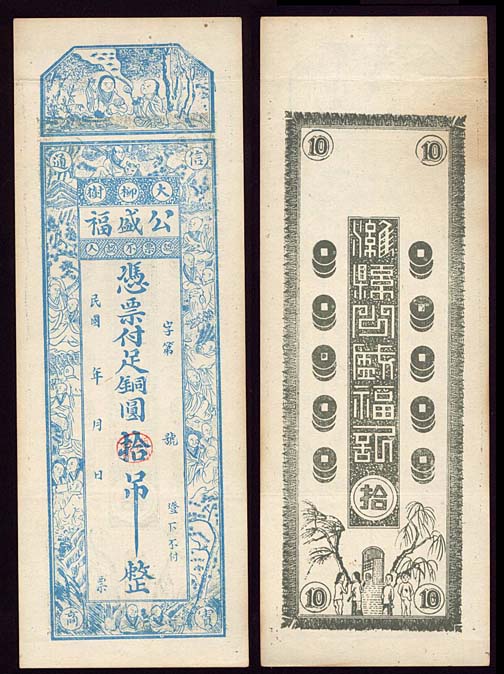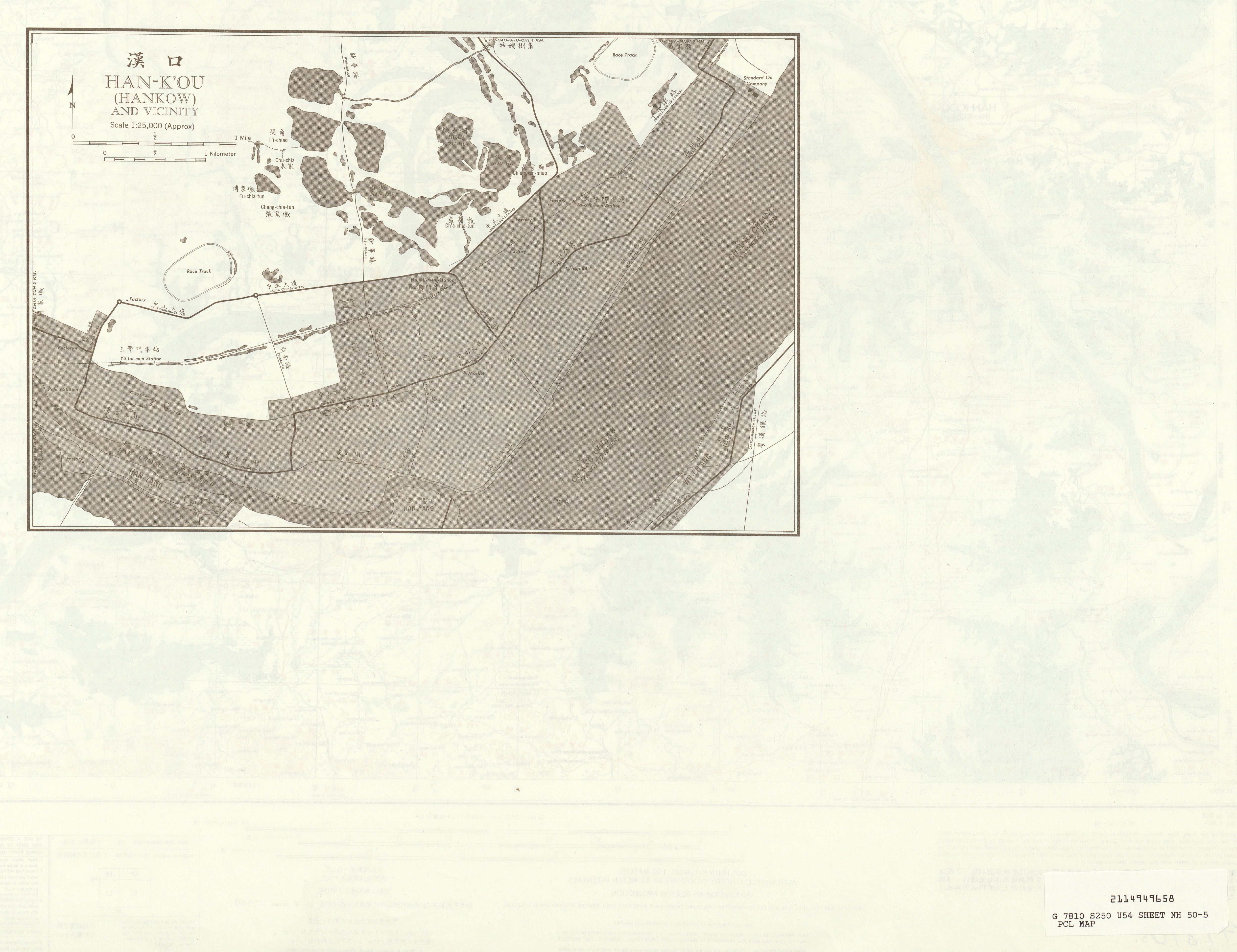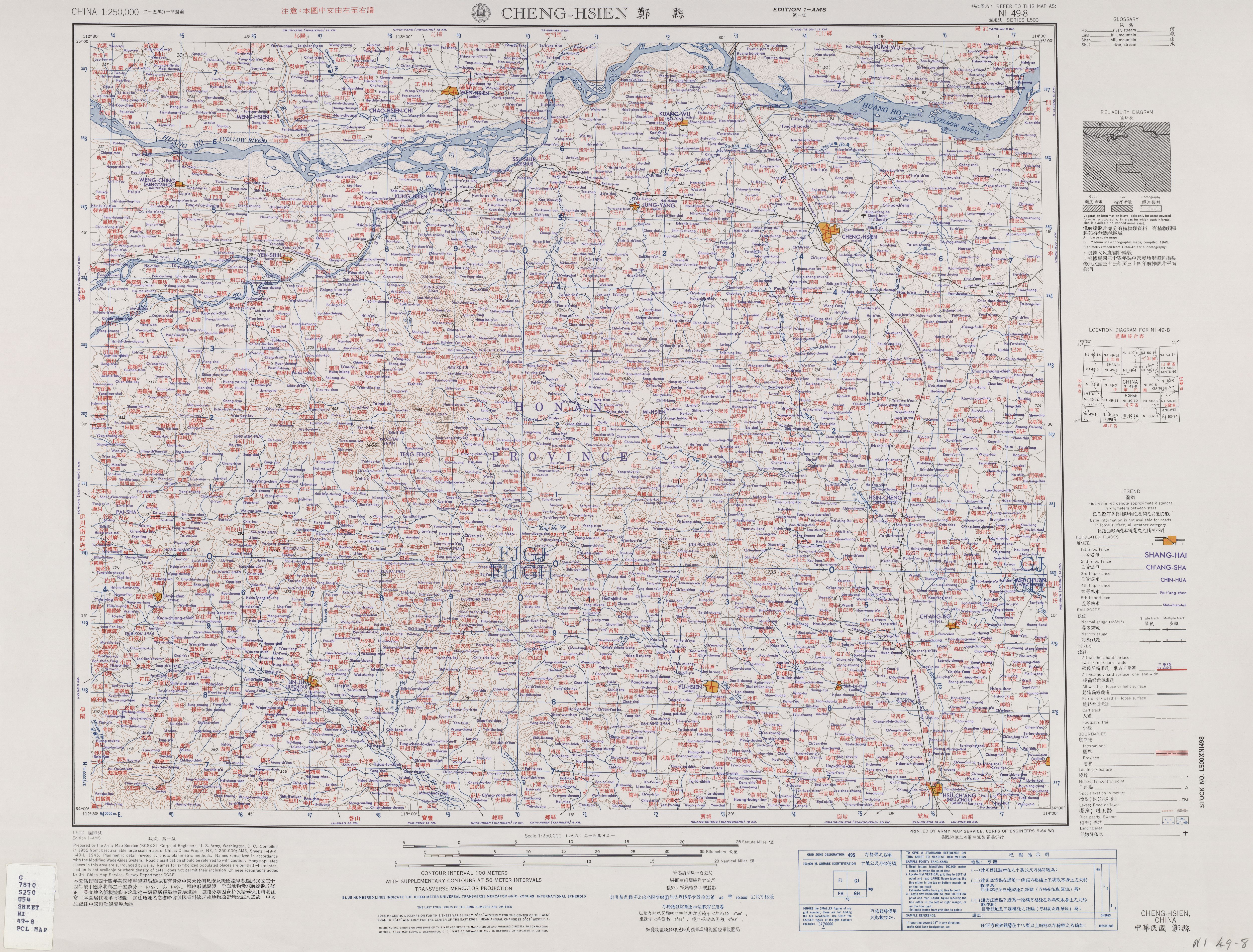|
Qianzhuang
Qianzhuang () were local independent Chinese banks in the early modern period, as distinguished from the nation-wide bank networks headquartered in Shanxi province called the "Shanxi banks" (票號, ''piaohao''). Also known by a variety of regional names, such as ''qiansi'' (錢肆), ''qianpu'' (錢鋪), ''yinhao'' (銀號), ''duihuan qianzhuang'' (兌換錢莊), ''qiandian'' (錢店), ''qianzhuo'' (錢桌), ''duidian'' (兌店), ''qianju'' (錢局), ''yinju'' (銀局), or ''yinpu'' (銀鋪) in Mandarin Chinese, and translated as ''money shops'', ''native banks'', ''private Chinese banks'', or ''old-style banks'' in English, ''qianzhuang'' banks first sprung up during the Ming dynasty but greatly expanded during the Qing dynasty. Unlike the Shanxi banks, the ''qianzhuang'' tended to have much more risky business practices. These institutions first appeared in the Yangzi Delta region, in Shanghai, Ningbo, and Shaoxing. The first ''qianzhuang'' can be traced to at least the mid-e ... [...More Info...] [...Related Items...] OR: [Wikipedia] [Google] [Baidu] |
Shanxi Bank
Piaohao (Traditional Chinese: , literally 'draft banks'), also known as (), (), or (), in Mandarin Chinese, or ''Shanxi banks'' () or ''Shansi banks'' in English language, English, were a type of bank that existed in China during the Qing dynasty until approximately 1952. The were started by Shanxi merchants, merchants from the province of Shanxi who were often originally engaged in other businesses before they entered finance. The were mostly active in northern China while the ''qianzhuang'' were mostly active in the Southern China, south. The continued to be the dominant financial institutions of China until 1900 when more modern commercial banks started being created by both the imperial and provincial governments, and the benefitted more from their close ties with foreign banks operating in Chinese treaty ports. During their heyday the had over 400 branches operating across the territory of the Qing dynasty and branches in other countries like Japan, Korea, Russia, Ind ... [...More Info...] [...Related Items...] OR: [Wikipedia] [Google] [Baidu] |
Yangtze
The Yangtze or Yangzi ( or ) is the longest river in Eurasia and the third-longest in the world. It rises at Jari Hill in the Tanggula Mountains of the Tibetan Plateau and flows including Dam Qu River the longest source of the Yangtze, in a generally easterly direction to the East China Sea. It is the fifth-largest primary river by discharge volume in the world. Its drainage basin comprises one-fifth of the land area of China, and is home to nearly one-third of the country's population. The Yangtze has played a major role in the history, culture, and economy of China. For thousands of years, the river has been used for water, irrigation, sanitation, transportation, industry, boundary-marking, and war. The Yangtze Delta generates as much as 20% of China's GDP, and the Three Gorges Dam on the Yangtze is the largest hydro-electric power station in the world. In mid-2014, the Chinese government announced it was building a multi-tier transport network, comprising railway ... [...More Info...] [...Related Items...] OR: [Wikipedia] [Google] [Baidu] |
Treaty Port
Treaty ports (; ) were the port cities in China and Japan that were opened to foreign trade mainly by the unequal treaties forced upon them by Western powers, as well as cities in Korea opened up similarly by the Qing dynasty of China (before the First Sino-Japanese War) and the Empire of Japan. Chinese treaty ports The British established their first treaty ports in China after the First Opium War by the Treaty of Nanking in 1842. As well as ceding the island of Hong Kong to Great Britain in perpetuity, the treaty also established five treaty ports at Shanghai, Guangzhou (Canton), Ningbo, Fuzhou, and Xiamen (Amoy). The following year the Chinese and British signed the Treaty of the Bogue, which added provisions for extraterritoriality and the most favored nation status for the latter country. Subsequent negotiations with the Americans (1844 Treaty of Wanghia) and the French (1844 Treaty of Whampoa) led to further concessions for these nations on the same terms as the Britis ... [...More Info...] [...Related Items...] OR: [Wikipedia] [Google] [Baidu] |
Chengdu
Chengdu; Sichuanese dialects, Sichuanese pronunciation: , Standard Chinese pronunciation: ; Chinese postal romanization, previously Romanization of Chinese, romanized as Chengtu. is the capital city of the Chinese province of Sichuan. With a population of 20,937,757 at the 2020 Chinese census, 2020 census, it is the fourth most populous city in China, and it is the only city with a population of over 20 million apart from Direct-administered municipality, direct-administered municipalities. It is traditionally the hub of Western China. Chengdu is in central Sichuan. The surrounding Chengdu Plain is known as the "Country of Heaven" and the "Land of Abundance". Its prehistoric settlers included the Sanxingdui culture. The site of Dujiangyan, an ancient irrigation system, is designated as a World Heritage Site. The Jin River (Sichuan), Jin River flows through the city. Chengdu's culture reflects that of its province, Sichuan; in 2011, it was recognized by UNESCO as a city of ga ... [...More Info...] [...Related Items...] OR: [Wikipedia] [Google] [Baidu] |
Chongqing
ChongqingPostal Romanization, Previously romanized as Chungking ();. is a direct-administered municipality in Southwestern China. Chongqing is one of the four direct-administered municipalities under the State Council of the People's Republic of China, Central People's Government, along with Beijing, Shanghai, and Tianjin. It is the only directly administrated municipality located deep inland. The municipality covers a large geographical area roughly the size of Austria, which includes several disjunct urban areas in addition to Chongqing proper. Due to its classification, the municipality of Chongqing is the List of largest cities, largest city proper in the world by population, though Chongqing is not the most populous urban area. The municipality of Chongqing is the only Chinese city with a resident population of over 30 million; however, this number includes its large rural population. In 2020, Chongqing surpassed Shanghai as China's largest municipality by urban populati ... [...More Info...] [...Related Items...] OR: [Wikipedia] [Google] [Baidu] |
Hankou
Hankou, alternately romanized as Hankow (), was one of the three towns (the other two were Wuchang and Hanyang) merged to become modern-day Wuhan city, the capital of the Hubei province, China. It stands north of the Han and Yangtze Rivers where the Han flows into the Yangtze. Hankou is connected by bridges to its triplet sister towns Hanyang (between Han and Yangtze) and Wuchang (on the southern side of the Yangtze). Hankou is the main port of Hubei Province and the single largest port in the middle reaches of Yangtze. History The city's name literally means "Mouth of the Han", from its position at the confluence of the Han with the Yangtze River. The name appears in a Tang dynasty poem by Liu Zhangqing. Other historical names for the city include Xiakou (), Miankou (), and Lukou (). Hankou, from the Ming to late Qing, was under the administration of the local government in Hanyang, although it was already one of the four major national markets ( :zh:四大名镇) in ... [...More Info...] [...Related Items...] OR: [Wikipedia] [Google] [Baidu] |
Xuzhou
Xuzhou ( zh, s=徐州), also known as Pengcheng () in ancient times, is a major city in northwestern Jiangsu province, China. The city, with a recorded population of 9,083,790 at the 2020 Chinese census, 2020 census (3,135,660 of which lived in the built-up area made of Quanshan, Gulou, Yunlong and Tongshan urban Districts and Jiawang District not being conurbated), is a national complex transport hub and an important gateway city in East China. Xuzhou is a central city of Huaihai Economic Zone and Xuzhou metropolitan area. Xuzhou is an important node city of the country's Belt and Road Initiative, and an international new energy base. Xuzhou has won titles such as the National City of Civility (全国文明城市) and the United Nations UN-Habitat Scroll of Honour Award, Habitat Scroll of Honour award. The city is designated as List of National Famous Historical and Cultural Cities in China, National Famous Historical and Cultural City since 1986 for its relics, especially the ... [...More Info...] [...Related Items...] OR: [Wikipedia] [Google] [Baidu] |
Southern China
Northern China () and Southern China () are two approximate regions that display certain differences in terms of their geography, demographics, economy, and culture. Extent The Qinling–Daba Mountains serve as the transition zone between northern and southern China. They approximately coincide with the 0 degree Celsius isotherm in January, the isohyet, and the 2,000-hour sunshine duration contour. The Huai River basin serves a similar role, and the course of the Huaihe has been used to set different policies to the north and the south. History Historically, populations migrated from the north to the south, especially its coastal areas and along major rivers. After the fall of the Han dynasty, The Southern and Northern Dynasties (420–589) ruled their respective part of China before re-uniting under the Tang dynasty. During the Qing dynasty, regional differences and identification in China fostered the growth of regional stereotypes. Such stereotypes often appe ... [...More Info...] [...Related Items...] OR: [Wikipedia] [Google] [Baidu] |
Chinaknowledge
Chinaknowledge, with the subtitle "a universal guide for China studies", is an English-language hobbyist's web site that contains a wide variety of information on China and Chinese topics. The site was founded by and is maintained by Ulrich Theobald, a Lecturer for Chinese History and Classical Chinese at the University of Tübingen, where he received his doctorate in Chinese Studies in 2009. The site is frequently used as a citation A citation is a reference to a source. More precisely, a citation is an abbreviated alphanumeric expression embedded in the body of an intellectual work that denotes an entry in the bibliographic references section of the work for the purpose o ... source for facts presented elsewhere since it is not commercial and site's author states all his sites are freely visible and copyable. However, the site's author states, "When writing papers, students should use books and not the internet." Chinaknowledge.de provides information about Chinese his ... [...More Info...] [...Related Items...] OR: [Wikipedia] [Google] [Baidu] |
Zhengzhou
Zhengzhou is the capital of Henan, China. Located in northern Henan, it is one of the nine National central city, national central cities in China, and serves as the political, economic, technological, and educational center of the province. The Zhengzhou metropolitan area (including Zhengzhou and Kaifeng) is the core area of the Central Plains Economic Zone. The city lies on the southern bank of the Yellow River. Zhengzhou is a major hub of China's domestic and international transportation network; for example, it is connected to Europe and has an international airport. Zhengzhou is a National Civilized City and a List of National Famous Historical and Cultural Cities in China, State-list Famous Historical and Culture City. As of 2020, there are two List of World Heritage Sites in China, World Cultural Heritage Sites in Zhengzhou. The Zhengzhou Commodity Exchange (ZCE) is China's first futures exchange. Zhengzhou Airport Economy Zone is China's first Airport Economy Zone. As o ... [...More Info...] [...Related Items...] OR: [Wikipedia] [Google] [Baidu] |
Jinan
Jinan is the capital of the province of Shandong in East China. With a population of 9.2 million, it is one of the largest cities in Shandong in terms of population. The area of present-day Jinan has played an important role in the history of the region from the earliest beginnings of civilization and has evolved into a major national administrative, economic, and transportation hub. The city has held Sub-provincial city, sub-provincial administrative status since 1994. Jinan is often called the "City of Springs" for its famous 72 Artesian aquifer, artesian springs. Jinan is one of the top 35 cities in the world for scientific research as tracked by the Nature Index according to the Nature Index 2023 Science Cities. The city is home to List of universities and colleges in Shandong, several major universities, including Shandong University, Shandong, Shandong Normal University, Shandong Normal, Shandong Jianzhu University, Shandong Jianzhu, University of Jinan, Qilu University o ... [...More Info...] [...Related Items...] OR: [Wikipedia] [Google] [Baidu] |








